
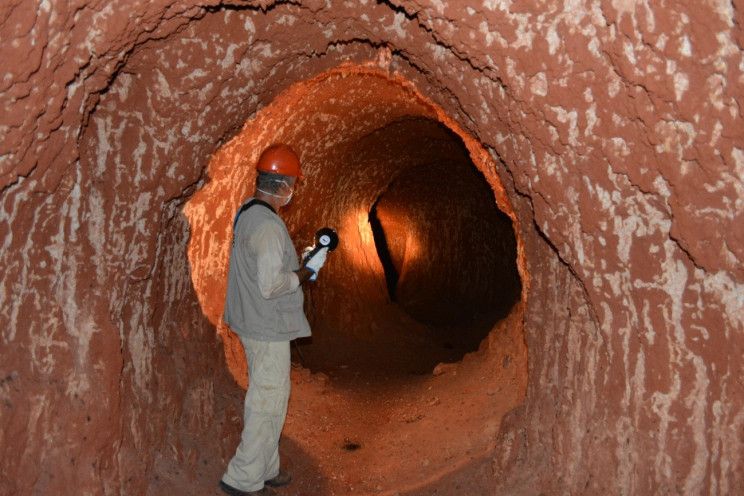
Massive Tunnels That Were Dug By A Giant Sloth That Lived 10,000 Years Ago
The largest tunnel is a whopping 2,000 feet long, six feet tall and up to five feet wide

Geology professor Heinrich Frank speculated that these massive tunnels must have been dug out by a living thing. “There’s no geological process in the world that produces long tunnels with a circular or elliptical cross-section, which branch and rise and fall, with claw marks on the walls,” Frank told Discover. Whatever the enormous creature was, it left huge claw marks across the walls and ceiling of this tunnel and others of similar size found in the area.
There are huge claw marks across the walls

Until today, Frank and other researchers have found over 1,500 massive tunnels in the state of Rio Grande do Sul alone, as well as hundreds more in Santa Catarina. Frank wrote “In these burrows, sometimes you get the feeling that there’s some creature waiting around the next curve – that’s how much it feels like a prehistoric animal den,”
Eventually, he did find enough evidence to convince him that the paleoburrows were most probably dug by the giant ground sloth, the second-largest prehistoric land mammal next to the mammoth. The primary evidence is the deep claw marks found by Frank on the walls of paleoburrows. Most scientists now agree that they could only have been made by a giant ground sloth.
Paleoburrows were most probably dug by the giant ground sloth

Megatherium americanum is the scientific name for an extinct species of giant ground sloth. The name means ‘great beast from America’. But despite these creatures stretching up to 4.6 meters (15 feet) and weighing roughly 2,590 kg (5,709 pounds), a single ground sloth would have spent much of its lifespan dedicated entirely to constructing tunnels as large and extensive as these palaeoburrows are. So why bother?
Frank and his team are unsure whether the extensive caverns were used to escape the climate, predators, or humidity, but then even those explanations seem unlikely. After all, a much smaller burrow would have suited those purposes just fine, wouldn’t it?
Could it be that several individuals inherited the burrows over generations, and kept adding to the structure to make it so enormous. Again, that’s something the researchers will need to confirm through further observations.

Discovered in 1787 by Manuel Torres in Argentina, the first M. americanum fossils were shipped to the Museo Nacional de Ciencias in Madrid, where the original skeleton is still on display.
In 1796, comparative anatomist Georges Cuvier determined the relationships and appearance of Megatherium, establishing it was a sloth. At first, he believed that the animal used its enormous claws to climb trees, like modern sloths, but he later changed his hypothesis to support a subterranean lifestyle, with the claws used to dig tunnels.
Megatherium americanum was up to 10 times the size of living sloths reaching weights of up to four tonnes (similar to a present day bull elephant).

Despite its enormous claws, M. americanum was a vegetarian. This has been confirmed through chemical analysis of the animal’s teeth which shed light on what it ate during life. And it could have also meant that it was an easier target for – humans.
Yes, we do know they overlapped with humans in time as Megatherium fossils have been found with cut marks on them. This suggests that these giant sloths were on the menu thousands of years ago, which could have contributed to their extinction.


Little was known about the sloth-dug tunnels before this point and since their initial discovery, Frank and his team of researchers have found more than 1,500 tunnels in Rio Grande do Sul area alone. Many of the larger burrows stretch hundreds of feet long and branch off in various other directions. The largest of which measures 2,000 feet long, 6 feet tall, and varies from 3 to 5 feet wide. When calculated out, this means that 4,000 metric tons of dirt was dug out to create just this one burrow.
Part of what allows the burrows to grow to be so large is just how dedicated the sloth generations were at digging them. The largest burrow was likely constructed over several generations of sloths working in teams to expand it.
Frank and other researchers are in strong agreement that the burrows were dug by a type of ground sloth that was as big as modern African elephants that lived up until about 10,000 years ago.
Assuming Frank is right, these sloths would've been some of the biggest land mammals on earth ever to exist. There is another group of researchers that believe the burrows were created by now-extinct armadillos that would've worked in teams to create the large burrows. The debate can continue about which animal dug the tunnels, but the actual reasoning behind the tunnels' construction in the first place is still trying to be explained.
The paleoburrows are distributed oddly when you consider their geography in total. They have been found only in the southern Brazilian states of Rio Grande and Santa Catarina. Only a few of the large tunnels have been found in the northern part of Brazil and even other South American Countries. This evidence suggests that the type of ground sloths that dug these burrows were relegated to a fairly minuscule geographic location for nearly the entirety of their life.
Other scientists, like Greg McDonald, a paleontologist, believe that just because the burrows haven't been found in other areas doesn't mean that they don't exist. McDonald states that burrows in other locations were likely overlooked and will be discovered soon.
Whatever the consensus of experts suggests, these burrows are still wonders of ancient animal engineering. In many ways, it can be said that modern man-made tunnels mimic the tunnels of ancient sloths.
Recommended Videos
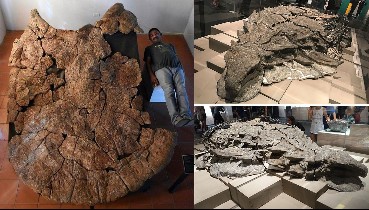 19 Ancient Fossils That Will Make People Say ‘Whoa’188 views
19 Ancient Fossils That Will Make People Say ‘Whoa’188 views These Amazing Striped Icebergs in Antarctica Look Like Candy59 views
These Amazing Striped Icebergs in Antarctica Look Like Candy59 views-
Advertisements
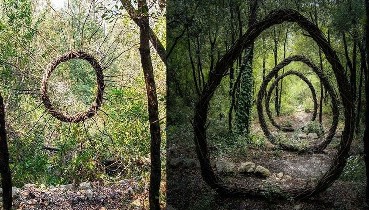 Spencer Byles Does Nature Better Than Thoreau543 views
Spencer Byles Does Nature Better Than Thoreau543 views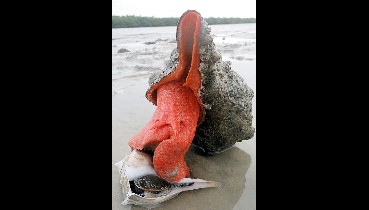 Giant Horse Conch getting some breakfast...114 views
Giant Horse Conch getting some breakfast...114 views Amazing flowers amazings alien tricyrtis hirta102 views
Amazing flowers amazings alien tricyrtis hirta102 views Peristeria Elata-- Dove Orchids1309 views
Peristeria Elata-- Dove Orchids1309 views 30 Most Beautiful Bird Photography71972 views
30 Most Beautiful Bird Photography71972 views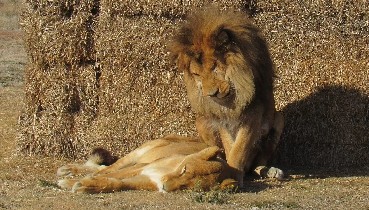 Lion Husband Stays By His Sick Wife’s Side Until The Very End119 views
Lion Husband Stays By His Sick Wife’s Side Until The Very End119 views



